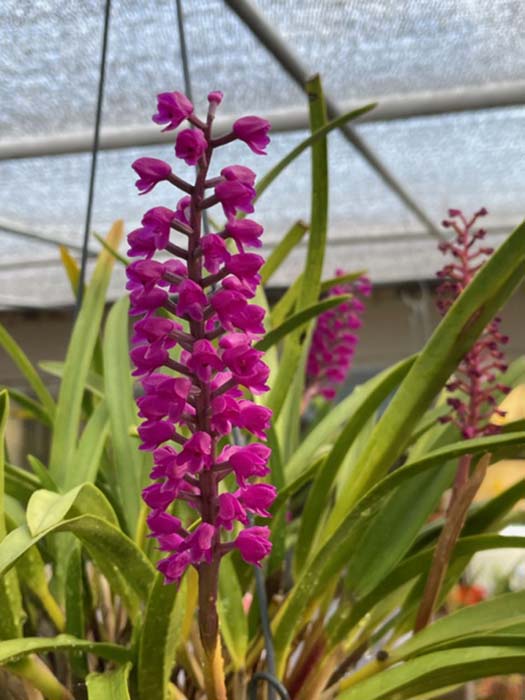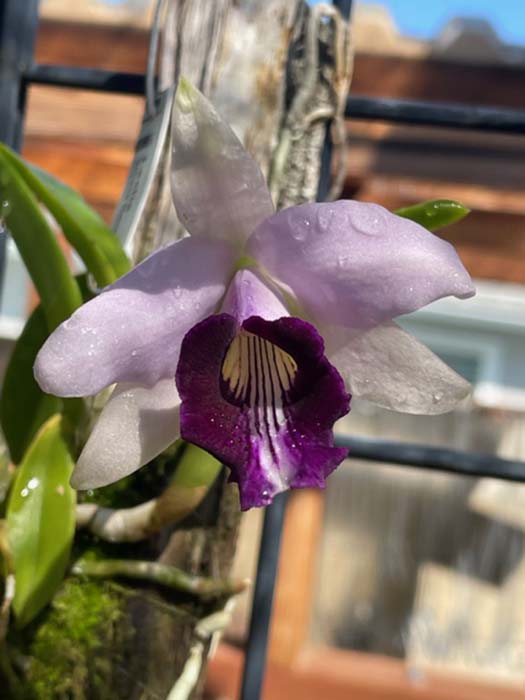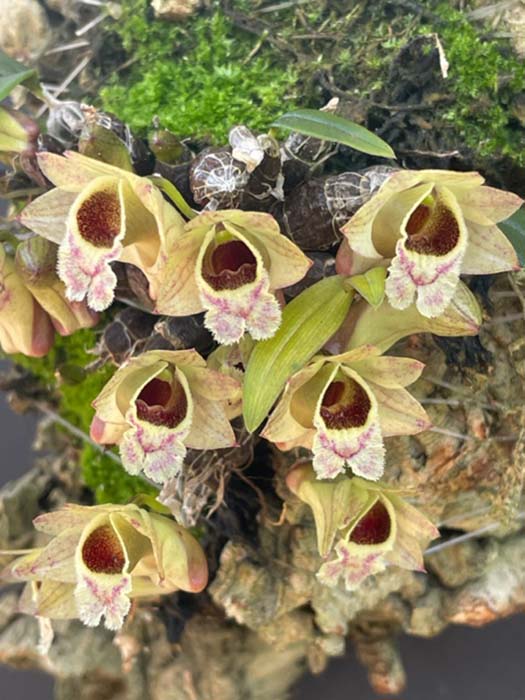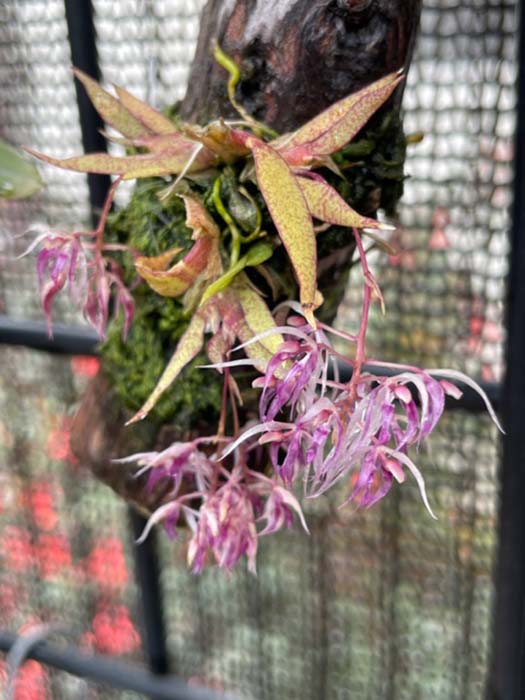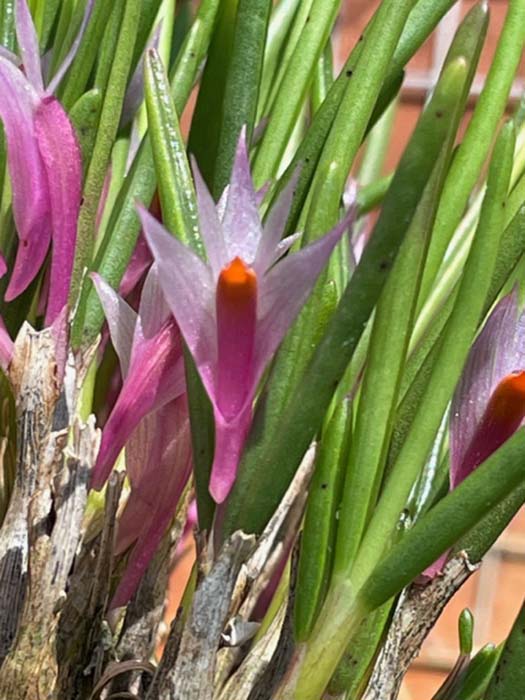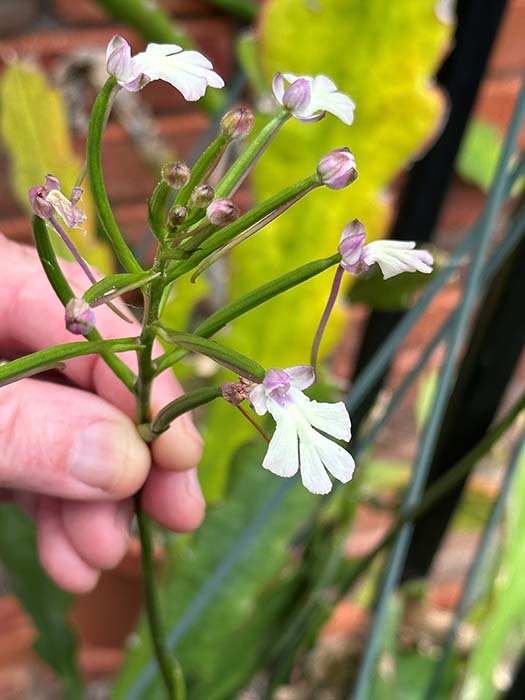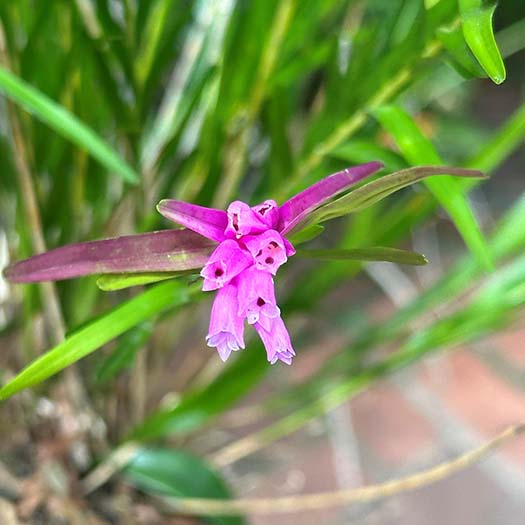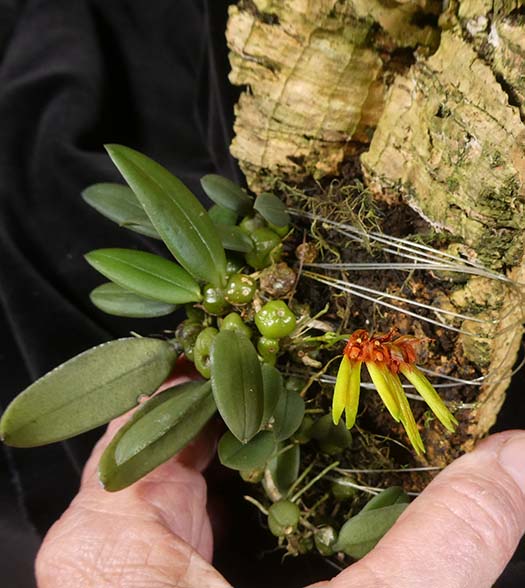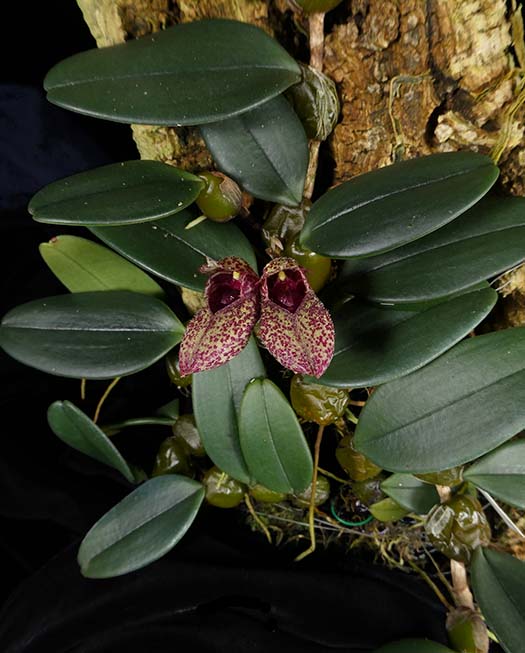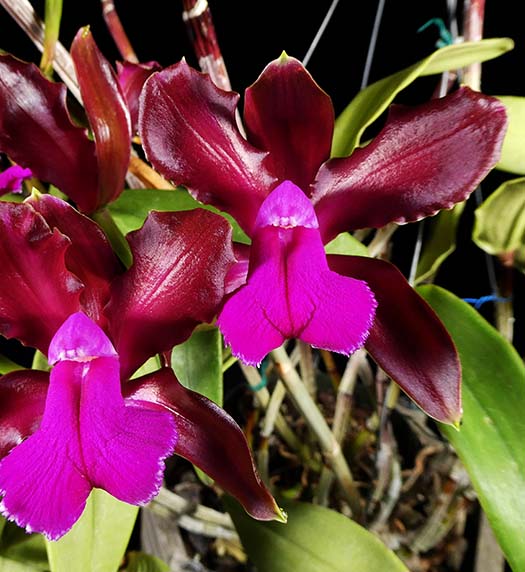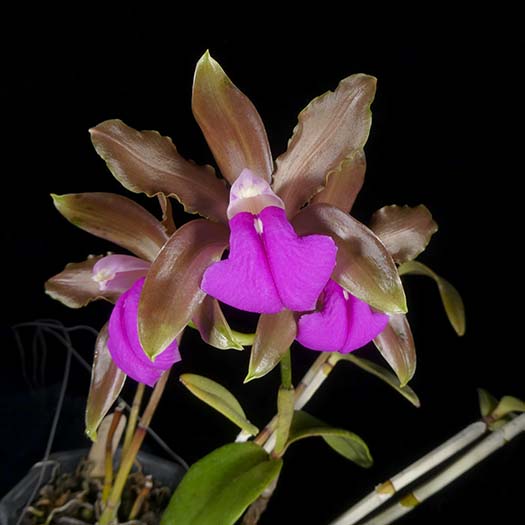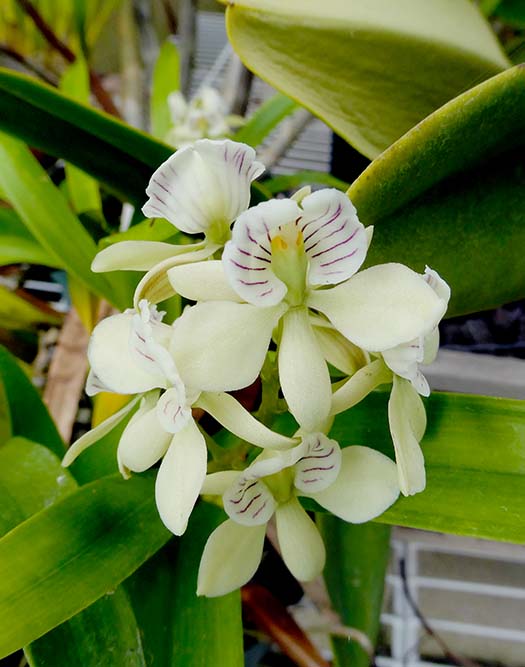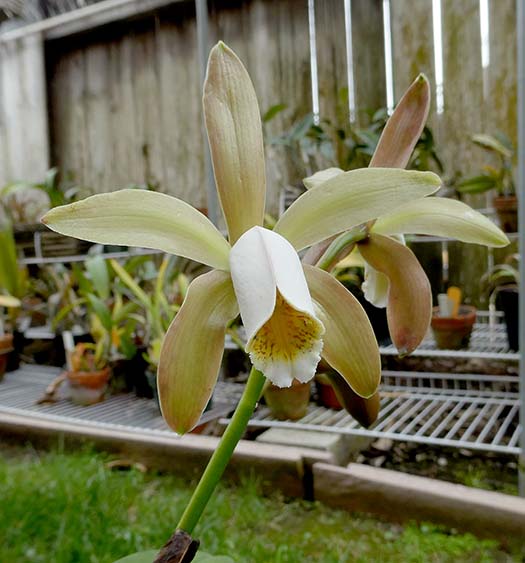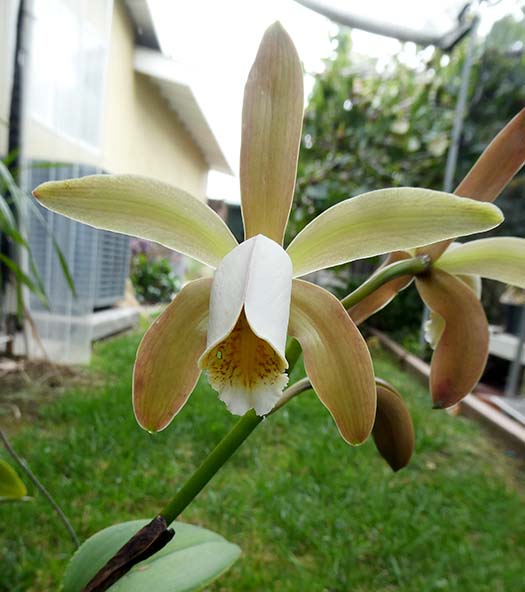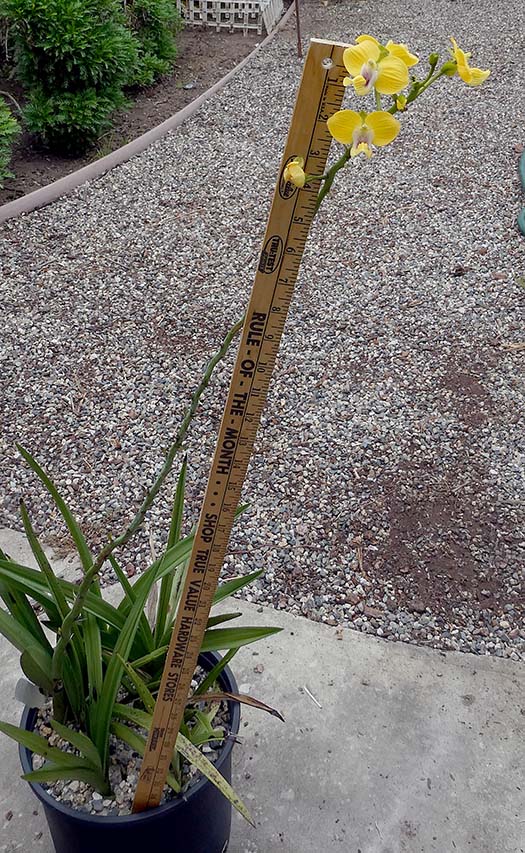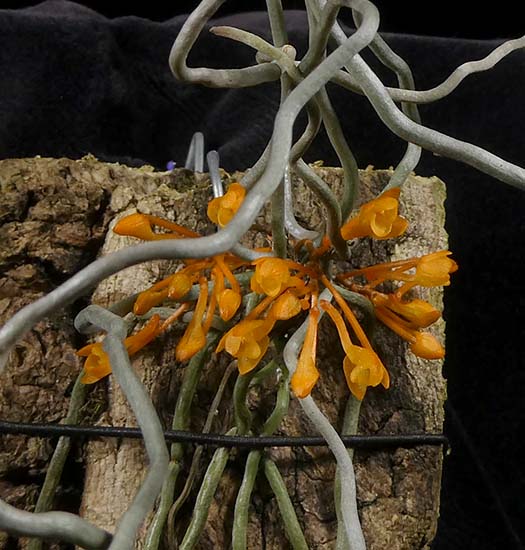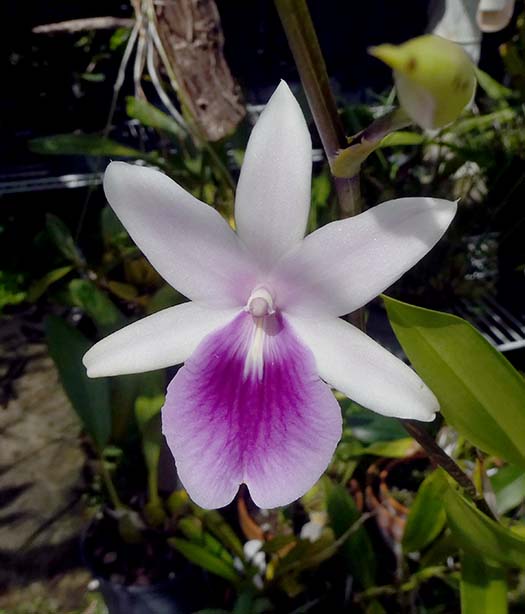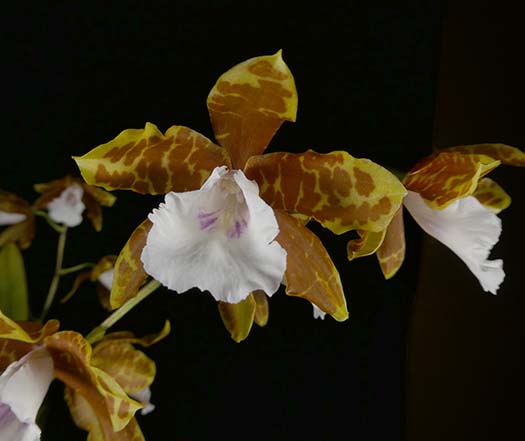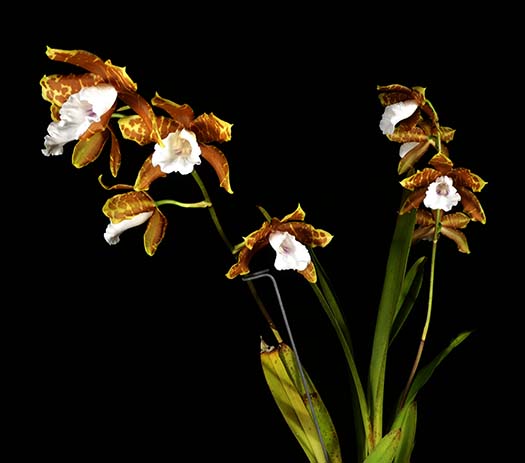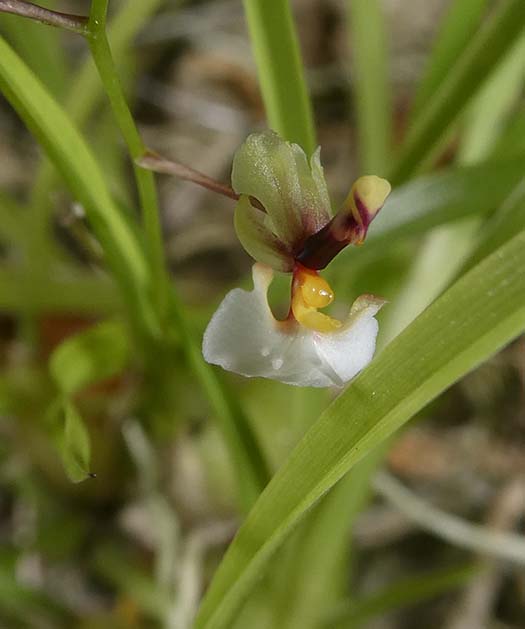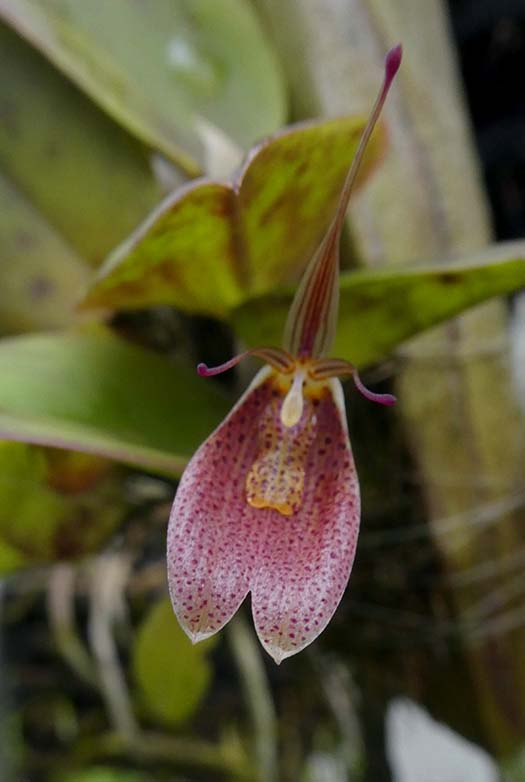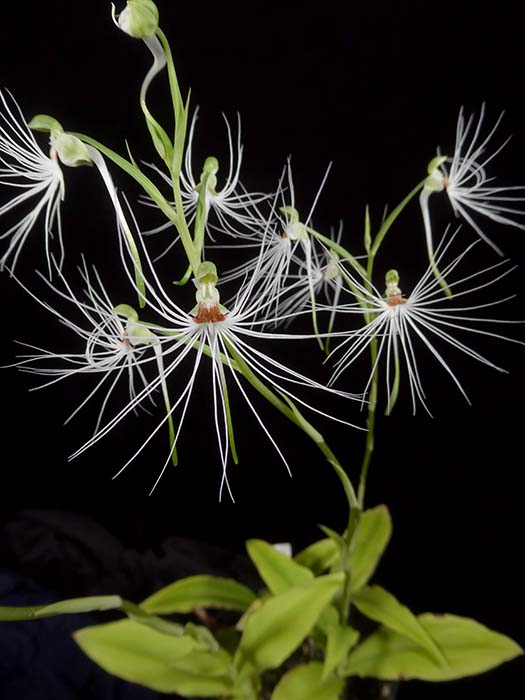October 2023
From Kurt Shanebeck:
|
|
Outdoors coastal, north of Los Angeles: |
|
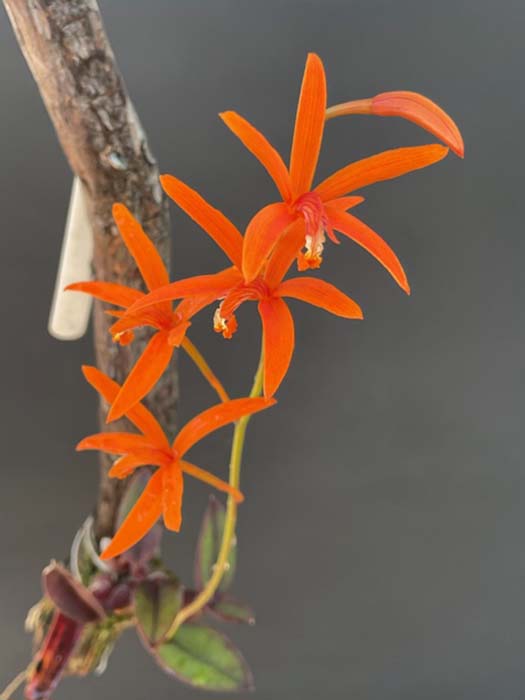
Cattleya sanguilobaAlthough the plant resembles many of the rupicolous species, this one is an epiphyte. Growing mounted with bright light. |
|
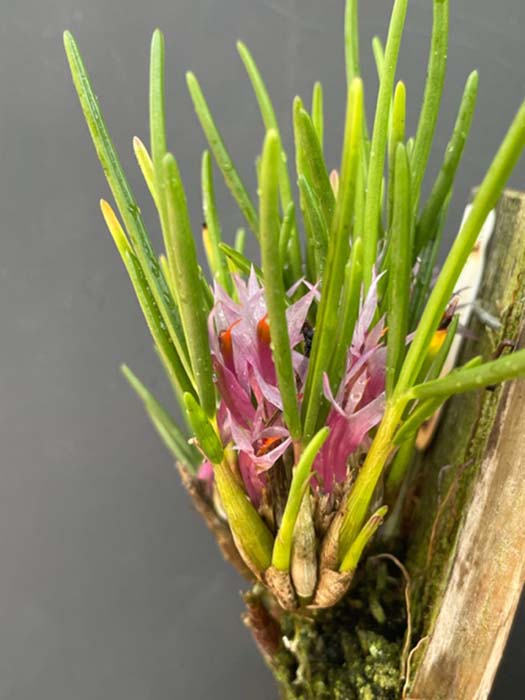 |
|
Dendrobium hellwigianumFrom higher elevations in New Guinea. Growing mounted with bright light |
|
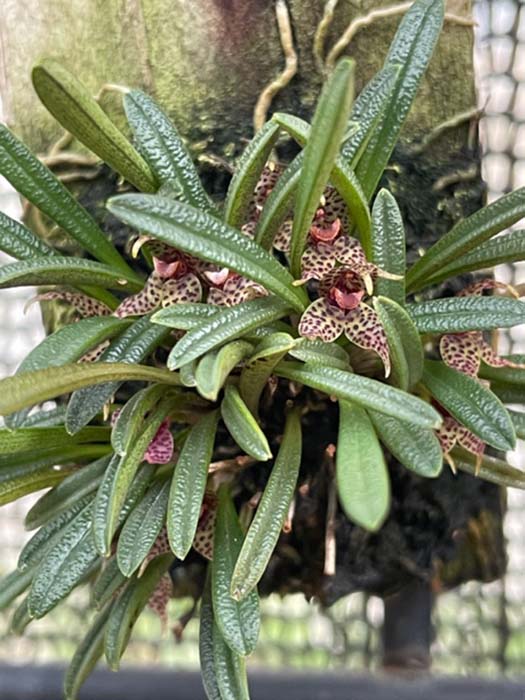 |
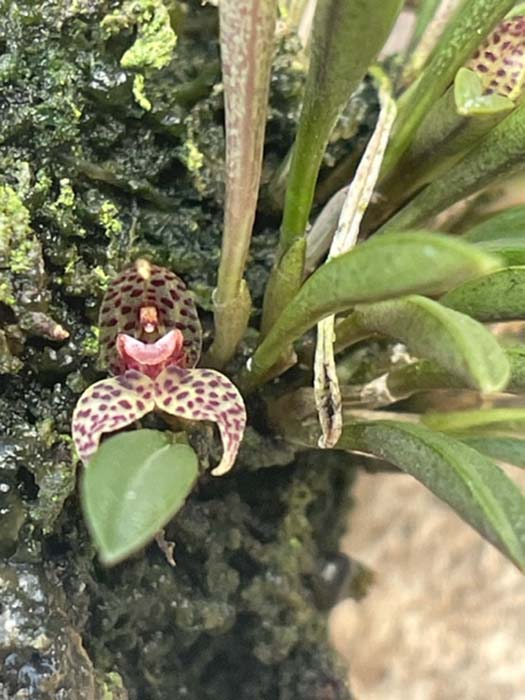 |
Dryadella simulaA micro-mini—the entire plant is just a couple of inches. Native to the South American cloud forests. Growing mounted and shady. |
|
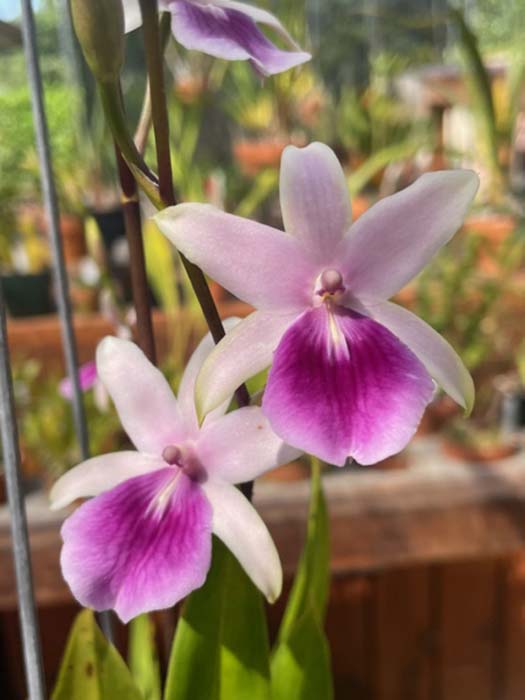
Miltonia regnelliiNative to Brazil. Sequentially opening flowers. Growing potted with bright light. |
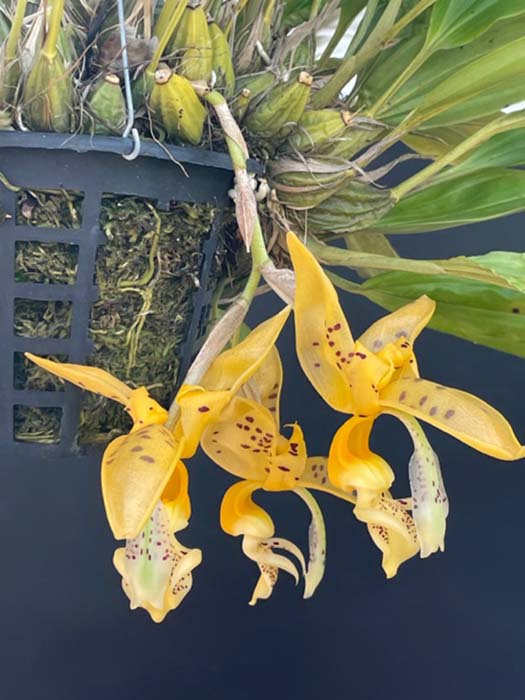
Stanhopea jenischianaStanhopea jenischiana. I have had this plant for a number of years, and although it always has grown vigorously it had never flowered even though I had given it the often recommended dry winter rest. I asked Andy Philips for advice—he noted that it is often a shy bloomer, but suggested giving it more light. I flooded his suggestion, and a week later I noticed a spike. Now I think it is probably likely the spike had already begun to form before I moved it but…. |
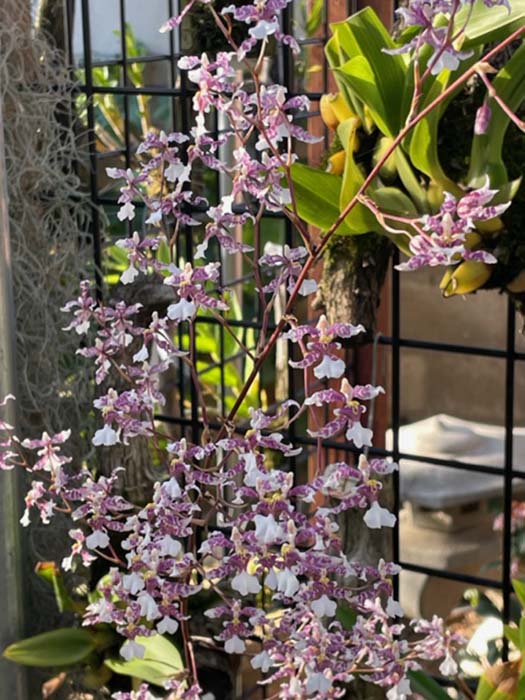 |
 |
Oncidium incurvumNative to Mexico and Nicaragua at elevations of 1300-2150m. Large (4+ feet) arching inflorescence with many flowers. Growing mounted with moderately bright light. |
|
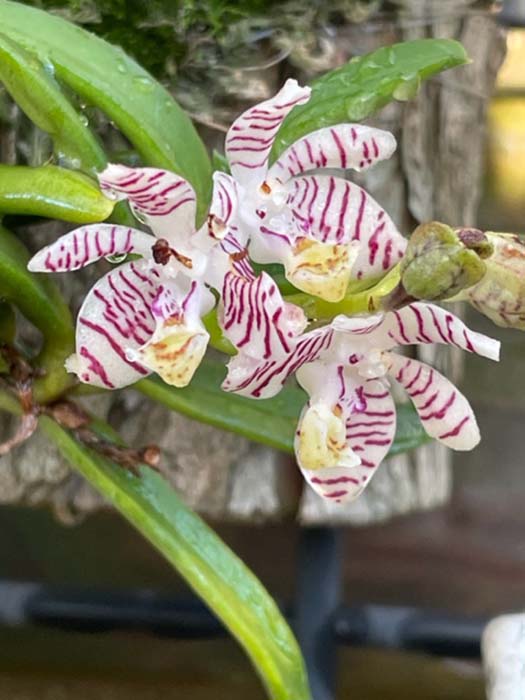
Trichoglottis pusillaA species native to Java and Sumatra at 1000-2000m. Has been a frequent bloomer for me. Growing mounted with bright light. |
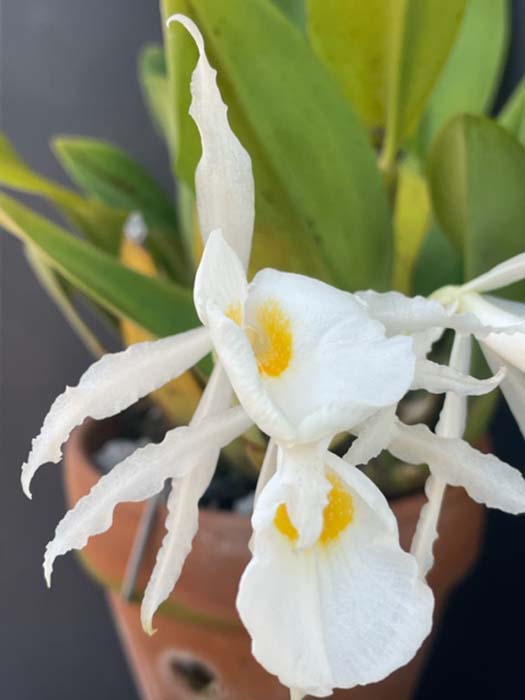 |
Trichopilia fragransFound in the Caribbean and South America at elevations of 1200-1800m growing as an epiphyte or terrestrial. Growing potted and fairly shady. |
|
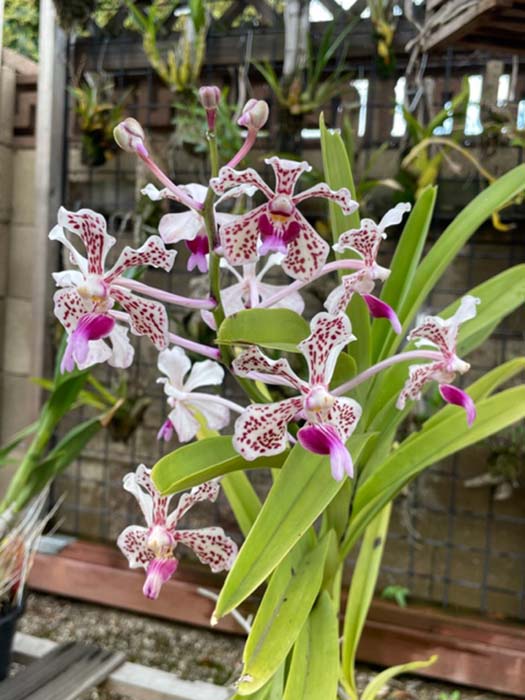
Vanda tricolorAfter getting 4 spikes in June it decided to send out a bonus spike. Growing potted with bright light. |
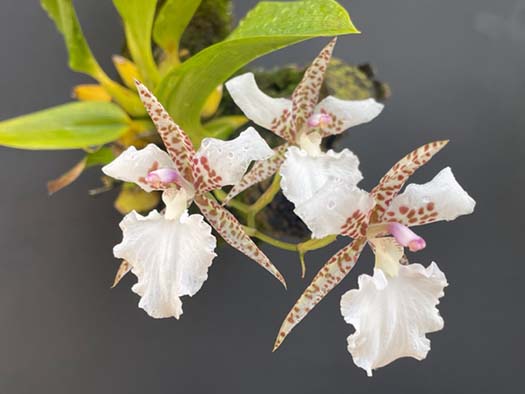
Rhynchostele rossiiNative to Central America at elevations of 2000-3000m. Growing mounted with moderately bright light
|
 |
|
Vitekorchis excavata (Oncidium excavatum)From South America growing at elevations of 2400-2800m. Tall upright spike with successively opening flowers. |
|
From Scott McGregor:All orchids grown outdoors, coastal southern California |
|
Laelia dayana v. major (Cattleya bicalhoi)Mini cattleya with a distinctive look. |
|
 |
|
Dendrobium caliculimentum
|
Epidendrum marmoratumMexican species—stays compact and has long-lasting flowers. |

Dockrillia bowmaniiFrom Australia, with a common name of “straggly pencil orchid” and despite being listed as a “hot grower”, this one is a pleasant surprise as an easy grower outdoors here. Needs little care and flush blooms around September. |
|
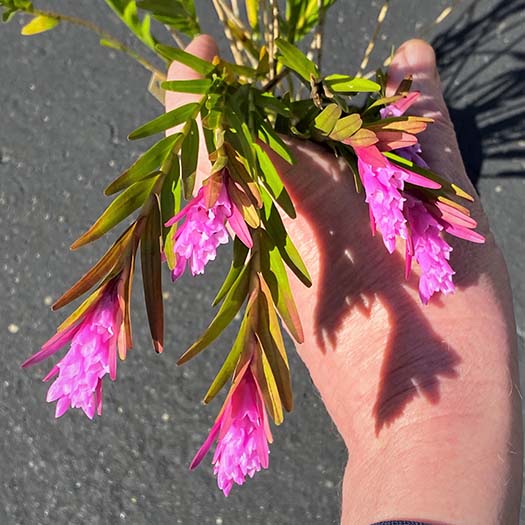 |
|
Isochilus major 'Santa Barbara'The ‘Santa Barbara’ varietal of this species seems to be unique in the deep color in the bracts as well as the flowers. I wonder if it might actually be Isochilus chiriquensis? https://www.orchidroots.com/detail/photos/102854/ |
|
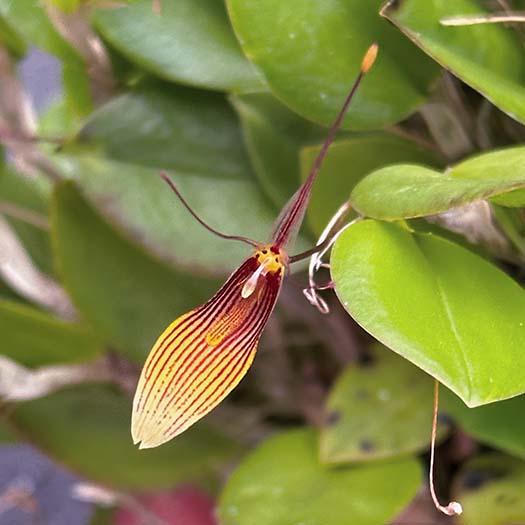 Restrepia brachypus v. striataSmall but cheerful flowers! |
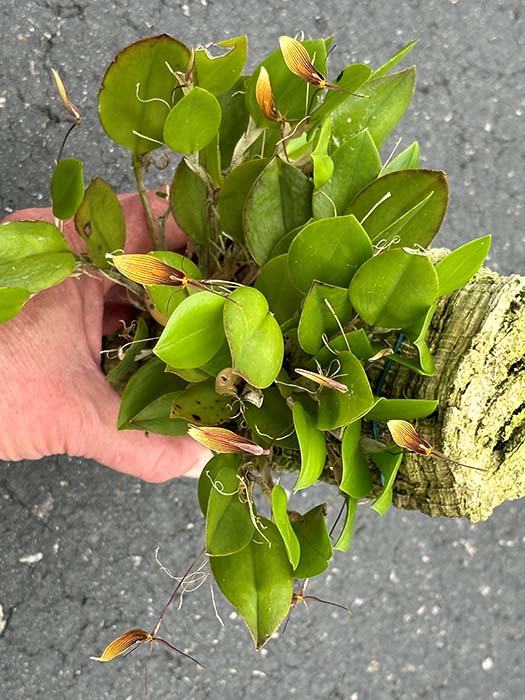 |
From Roberta Fox:Coastal southern California |
|
Outside in the Back Yard: |
|
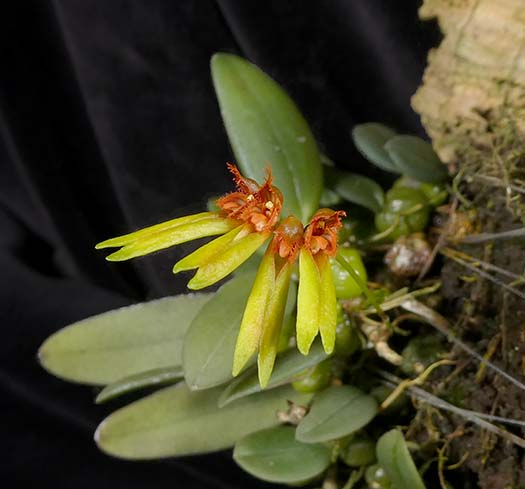
Bulbophyllum sp.A minature Bulbophyllum, identified by seller as Bulb. brevibrachiatum but probably misidentified. It is certainly colorful, and grows outside easily. Flowers a bit less than an inch, petals are green when they first emerge, then become brilliant yellow. |
|
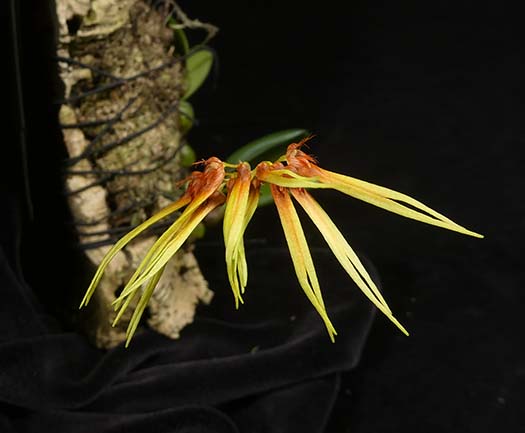 Bulbophyllum hirundinisA similar color scheme, larger but still a mini. This one is native to south-central and southeastern China, The photo at the right shows the two species for comparison. |
 |

Bulbophyllum frostiiNative to Vietnam. I grew it for several years in the greenhouse, but my research indicated that it came from high enough elevation to grow cooler. I lost one set of blooms to cold, wet weather last winter, but the plant was not harmed, and summer brought another pair of flowers. It's staying outside. |
|
 |
|
Cattleya bicolorThis one is line-bred. It has overhead protection but otherwise handles winter fine. |
|
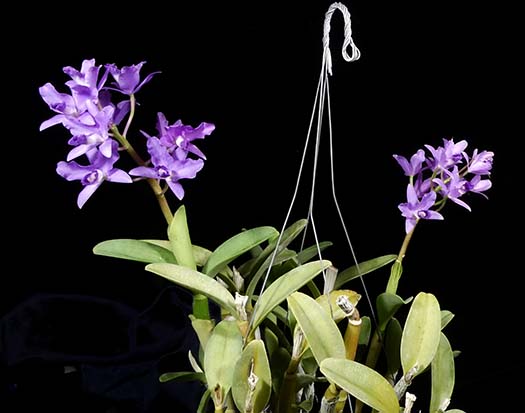
Guarianthe (Cattleya) bowringiana f. coeruleaNative to southern Mexico and Central America. Violet flowers, the typical form is pink. |
 |
Cattleya forbesiiNative to Brazil. Color isn't spectacular, but the lip is lovely. It is very cold-tolerant, and blooms 2-3 times a year, which is unusual for Cattleya species. |
|
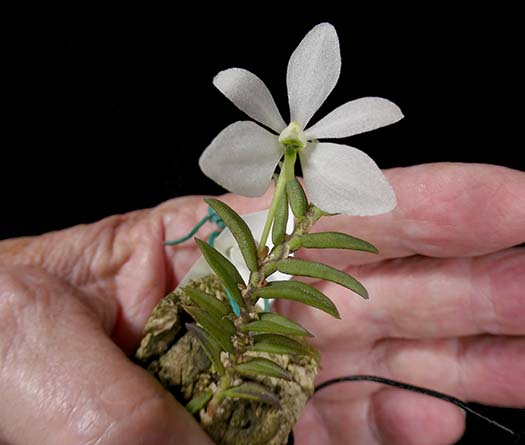
Ceratochilus biglandulosusNative to Java. Now classified at Trichoglottis. It grows over a range of elevations. I got two of these, one grows in the greenhouse and this one outside. The one in the greenhouse has grown a little faster, but hasn't bloomed while this one has bloomed several times. I think outside wins. Flower (about 3/4 inches) is bigger than the plant with 3/8 inch leaves). The crystalline flowers look very delicate, but are relatively long-lasting. |
 |
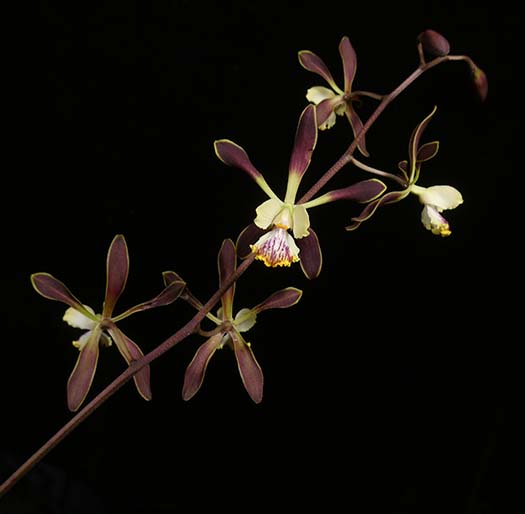
Encyclia alataNative to Mexico and much of Central America, over a range of elevations. It is very fragrant. |
|
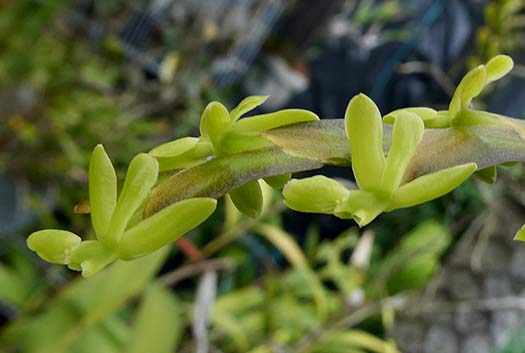
Epidendrum rigidumWeird little flowers with heavy substance. The plant winds around a tree-fern log. It is native to a wide area of the Americas, from Florida to Brazil and Argentina. |
 |

Dendrobium (Epigeneium) triflorum var. orientaleNative to Java. Like my other Epigeneiums, it blooms best on pseudobulbs that have climbed out of the pot or basket. This genus really seems to prefer roots to be free in the air. |
 |
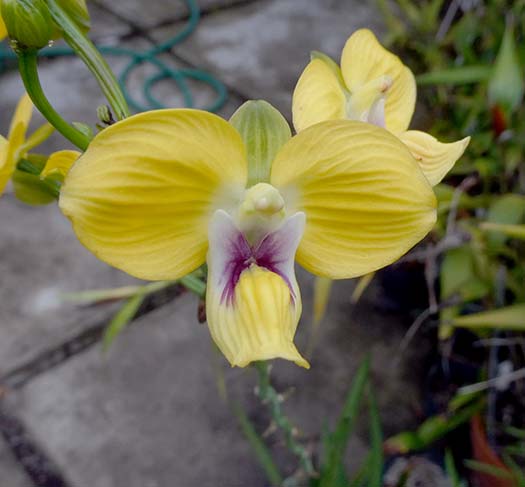 |
|
 |
|
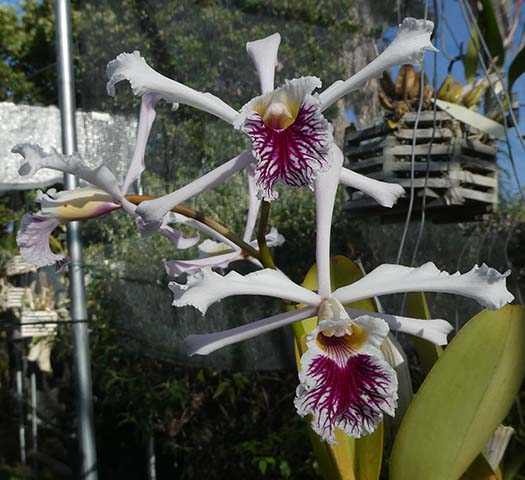
Cattleya (Laelia) crispaWhile the rolled-up narrow segments aren't going to win awards the lip is magnificent. This is always the last of the C.(L) purpurata relatives to bloom, approaching autumn. |
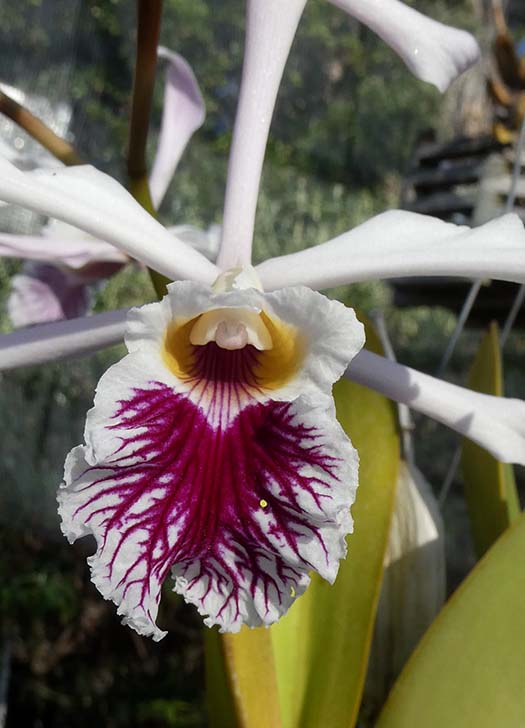 |
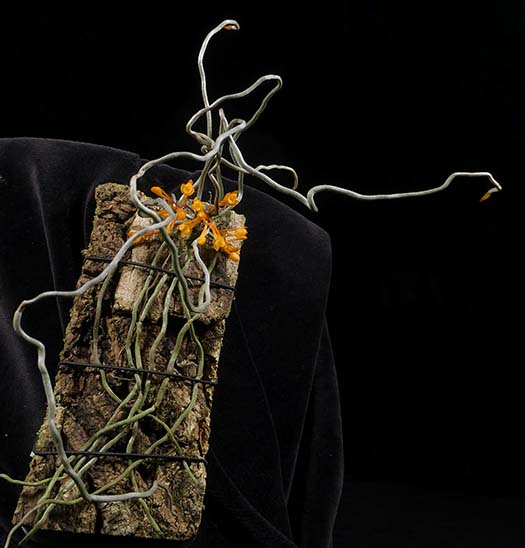 |
|
Microcoelia gilpinaeMost of the Angraecoids of Madagascar are white, this one is a brilliant exception. It is completely leafless, with chlorophyll in its roots for photosynthesis. I had and lost one of these a few years ago, but decided to try again when I found one available. This one has grown very well for more than a year before flowering. You can see the active, growing root tips. It gets watered or heavily misted every day, which appears to meet its needs. |
|
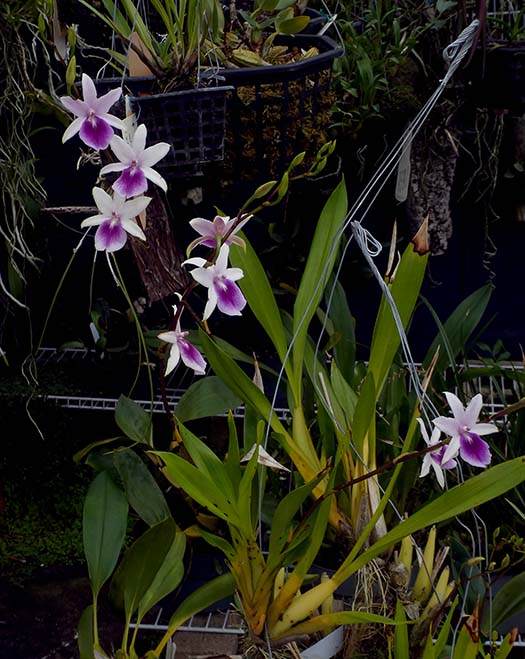 |
|
Miltonia regnelliiAbove is the typical form, to the right is the aurea form. The typical one has larger and flatter flowers. The aurea form, though, has a dramatic color combination. No need to choose, grow them both. Native to Brazil. |
|
Miltonia candidaAnother Brazillian nativew. This time of year, several Miltonia species put on a show. There will be more next month. |
|
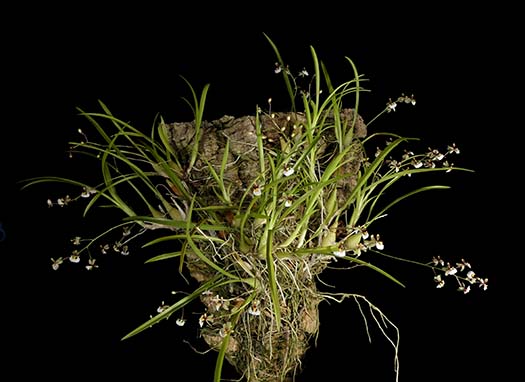 Gomesa (Ornithophora, Sigmatostalix) radicansThe genus name Ornithophora translates as "bird-bearing" and that is very descriptive. Get in close to these 1/4 inch flowers, and you can see its namesake. |
|
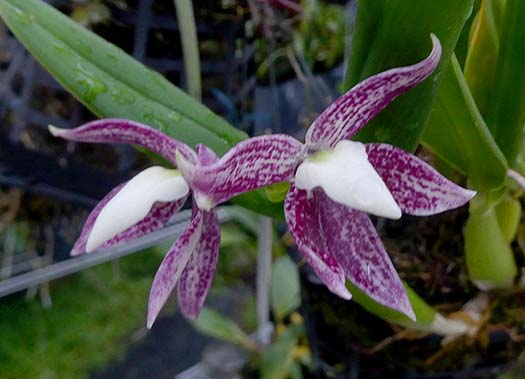 Prosthechea (Encyclia) garcianaFlowers are non-resupinate (lip upward). The plant is very floriforous, and flowers long-lasting. However, the color is best when they first emerge, becoming lighter as the flowers age. Native to Venezuela. |
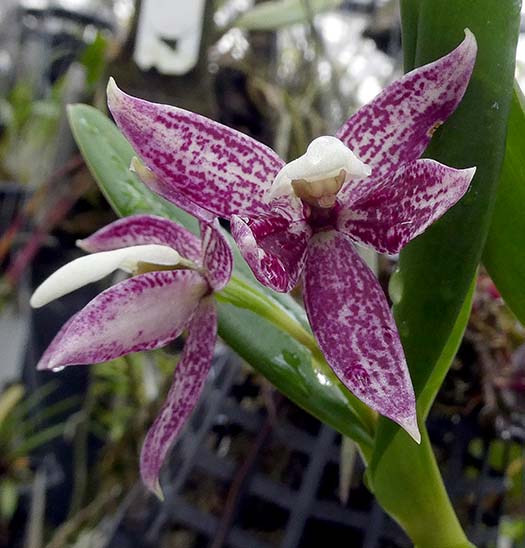 |
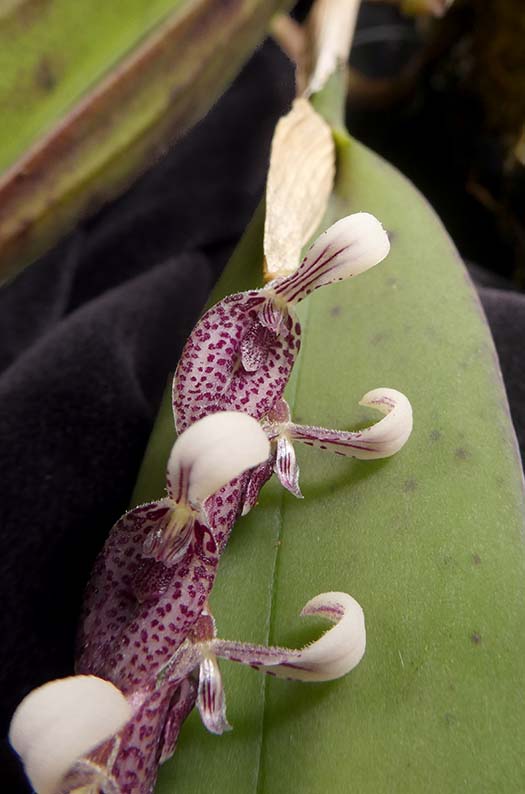
Acianthera (Pleurothallis) strupifoliaWeird string of flowers grows from the pendant, succulent leaf. A growth can re-flower over several years. Native to Brazil |
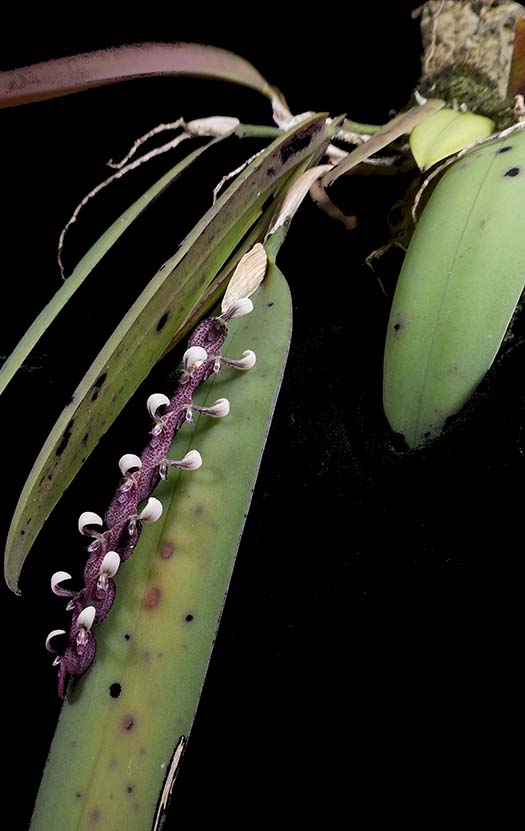 |

Restrepia contortaRestrepias can bloom at any time, some more prolific than others. I'm starting see quite a bit of action from members of this genus. |
|
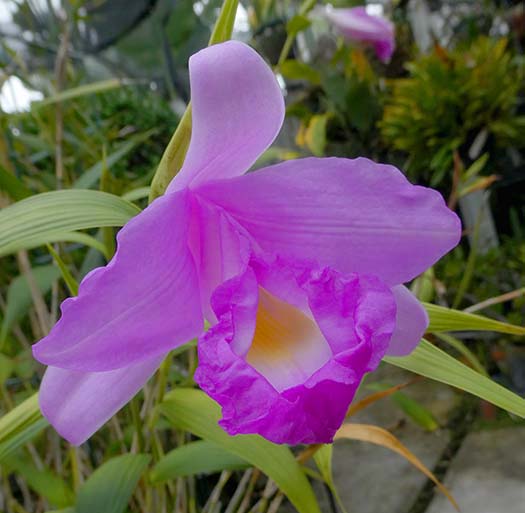 |
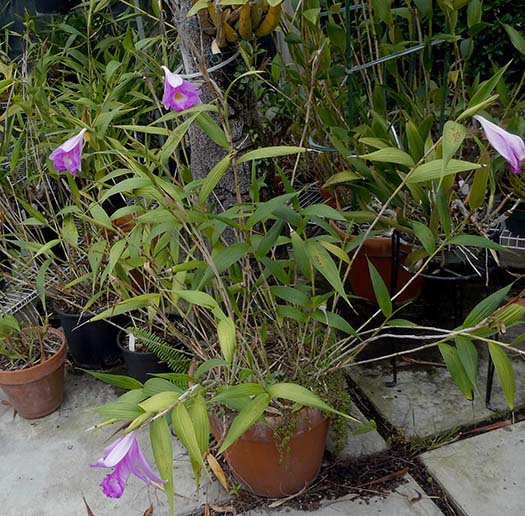 |
Sobralia macrantha 'Jack'Most Sob. macrantha, related species, and their hybrids, finished around the end of July. This particular plant gets started about that time, or early August, and can bloom into November. It is particularly vigorous and floriforous, with an unusual bloom season. |
|
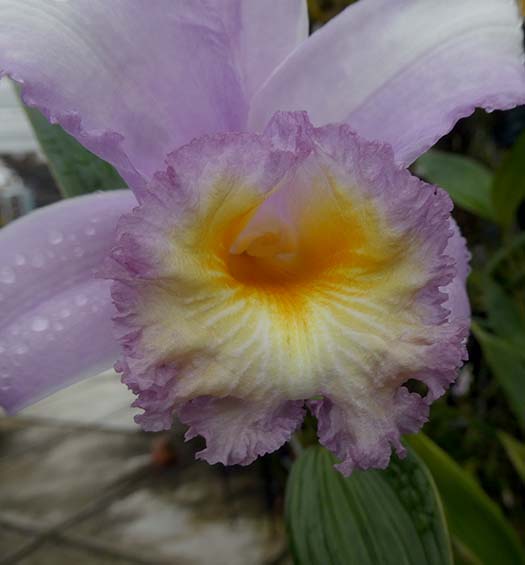
Sobralia violaceaNative to southern Central America and northern South America. It's one of my latest-blooming Sobralias, and I think one of the prettiest. |
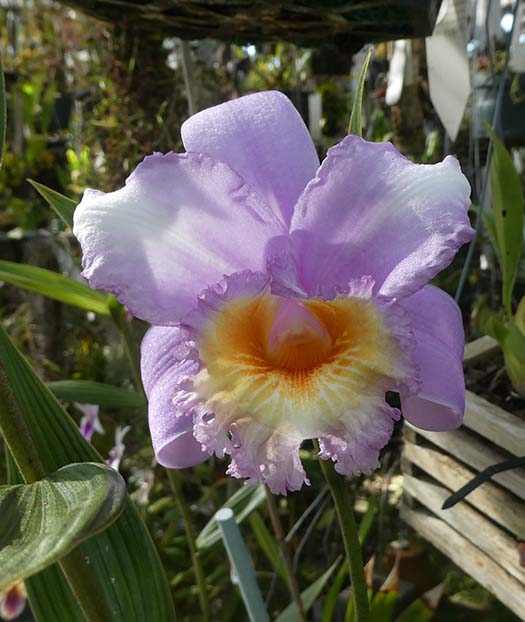 |
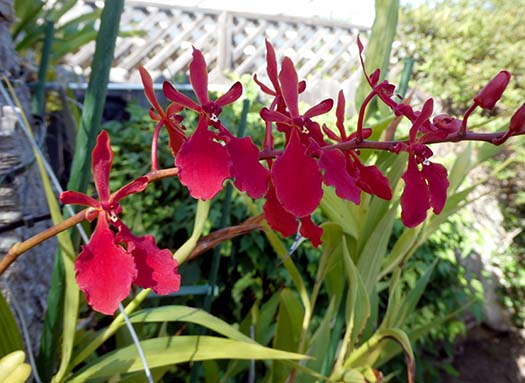
Renanthera imschootianaThis plant usually blooms in July or early August, but this year it is about 6 weeks late, no doubt due to our very cool spring and early summer. I showed another example of the species, a first-bloom seedling, that did bloom in late May. But this large, mature plant clearly wanted more warmth. It has several keikis, that usually bloom at the same time, this year I only got the one inflorescence. The briliant red almos glows in the sunshine. |
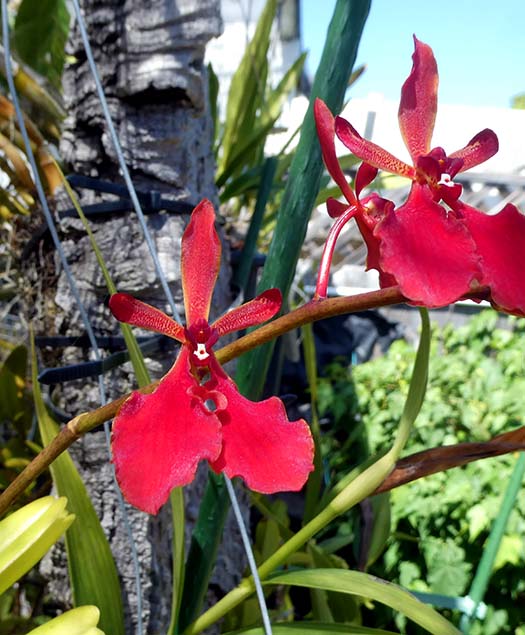 |
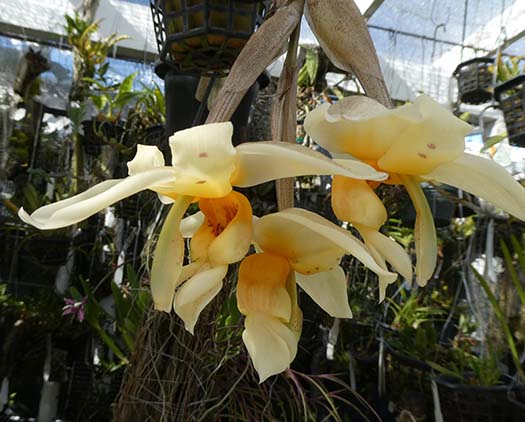
Stanhopea embreeiLast year I was traveling when it bloomed, came back to barely capture a few photos of fading flowres. This year, the timing was better. |
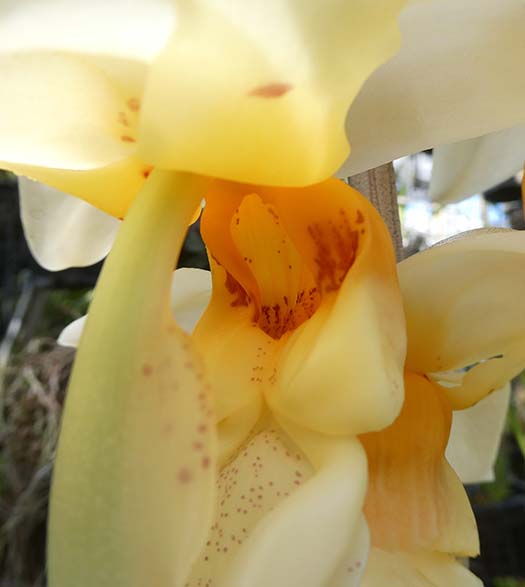 |
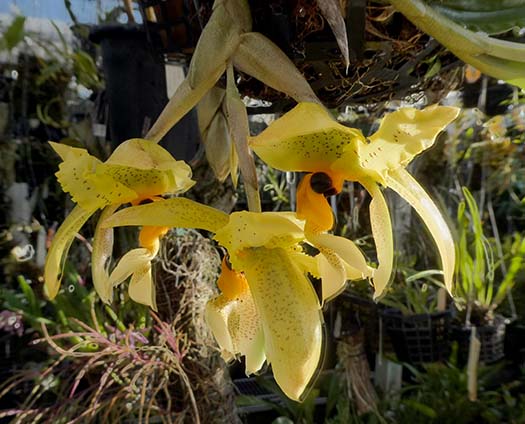 |
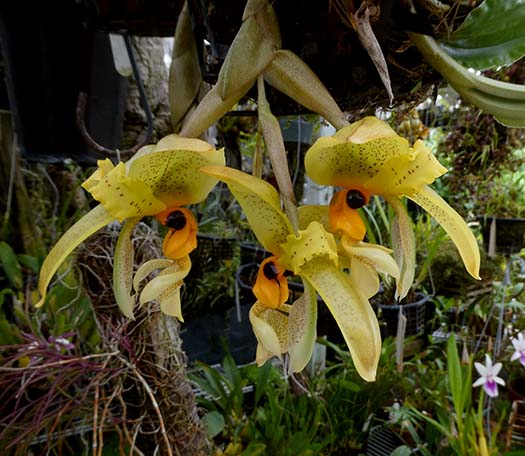 |
Stanhopea wardiiOf all my Stanhopeas, this is the most prolific species. This is the first inflorescence to bloom, glowing brightly in the early morning light. This plant has two more spikes, one almost ready to pop, and another one that will be several weeks later. Two divisions of another cultivar are also getting ready to bloom with 3 spikes each, all at different stages of development. With this much activity, I will be enjoying the species throughout most of October, even though each inflorescence only lasts about 3 days. Where Stan. tigrina usually blooms around dawn (when I'm still sleeping) this species tends to bloom a little later in the morning - I can have buds when I awaken, and flowers by the time that I prepare my coffee. Fragrance is light and wonderful. |
|
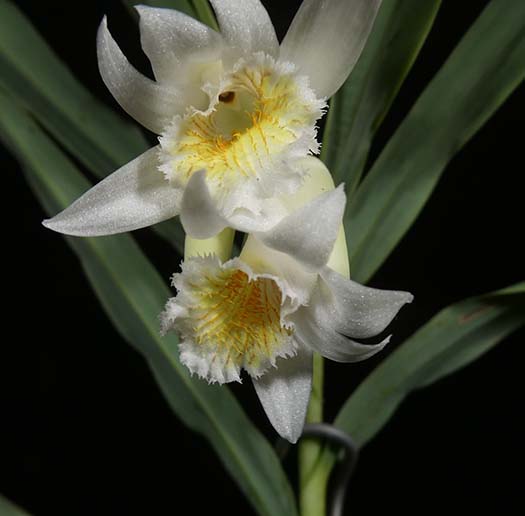
Thunia albaA terrestrial from southeast Asia and Himalaya region. The flowers emerge underneath the nodding leaves, so one must either get under it or lay on its back to see the beautiful blooms. It wil die back, but the leafless stem tends to stay green until the new growth has developed in the summer. It needs that old stem for the energy to make a new growth, so don't be tempted to trim it! |
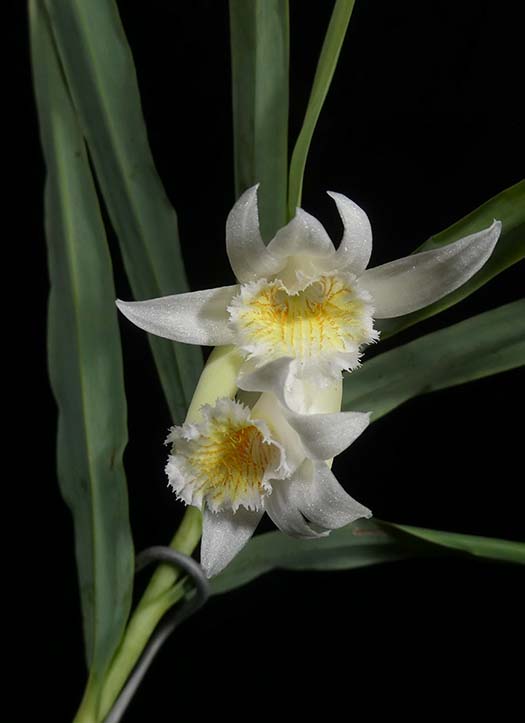 |
In the greenhouse... |
|
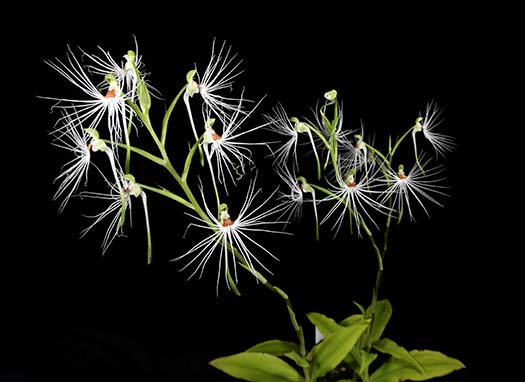 Habenaria medusaThis is one of my favorites, with its fantactic fringed lip. After blooming, it goes dormant. Once the leaves have pretty much died back, I reduce watering but I do still give it a bit of water every week or two through the winter. Then, in late March or early April, I increase watering, which seems to inspire the new growth to begin. The time to repot is during the winter while it is dormant. Sometimes a growth will make more than one tuber, so there may be some to share. |
|
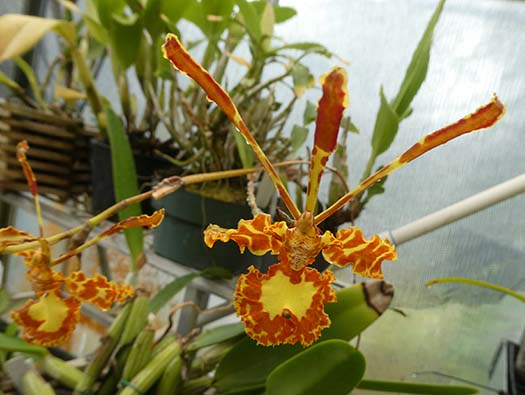
Psychopis papilioSpikes can produce flowers sequentioally for several years. When the growing tip of the inflorescnce dies, it very likely will make a branch (or two or three) to continue the show. So don't cut spikes until they are brown and crispy all the way down. These tend to resent repotting (can set them back quite a bit) so use a medium that won't break down for a long time. I use large Orchiata. When you do repot, just shake off what falls off easily, disturb roots a little as possible. |
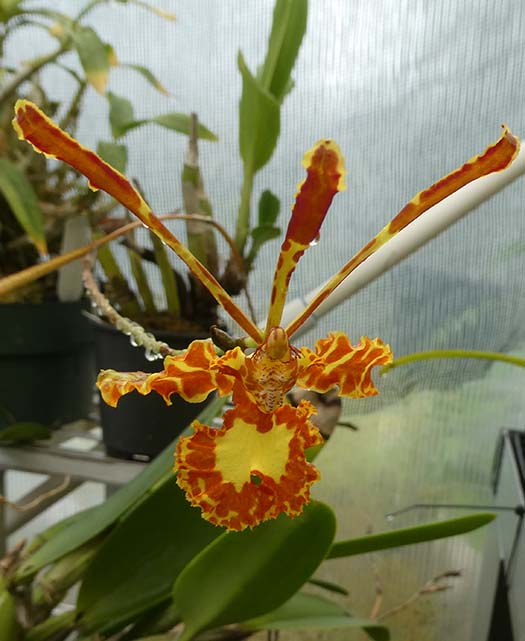 |

